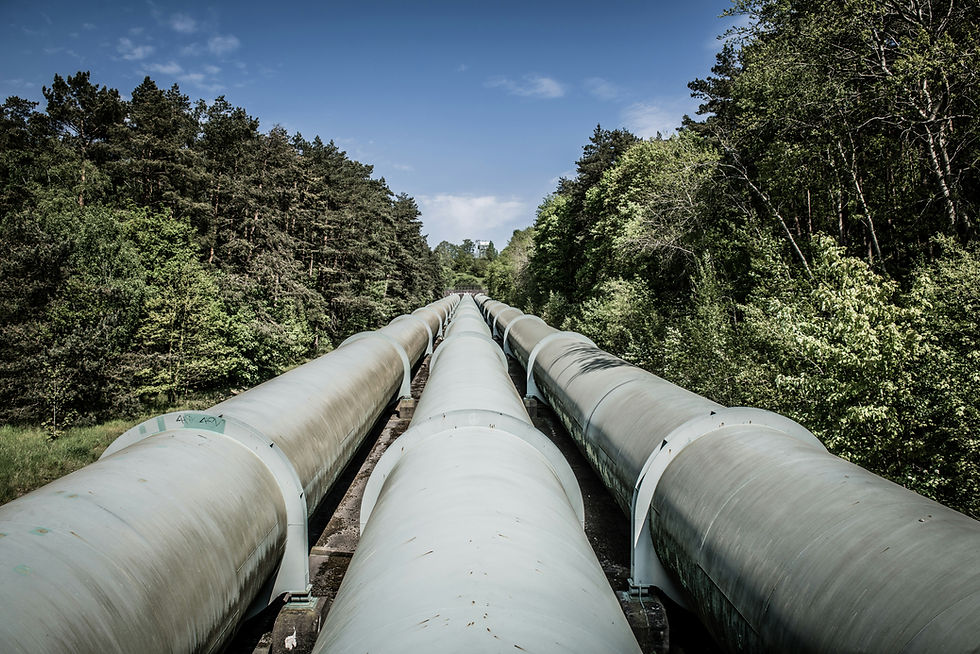More wild, wet weather?
- timgulley
- Jun 8, 2020
- 3 min read
How are protecting ourselves from potential increased rainfall in the future?
Each and every new development that is created must be prepared to face what could be its worst situation.
In earthquake prone cities buildings are designed to withstand extreme forces.
What happens in rainy cities? And what about if rainfall increases in the future?

On a typical development site a flow rate (known as a discharge consent) is given by a water company or other governing body that the development can discharge their rain water (also known as surface water) into a sewer or other location.
Typically measured in litres per second (l/s), these can be from 0.5 l/sec (sometimes even less but rare) up to 1,000’s of l/sec. The flow rate from the development site is reduced by flow controllers, pump stations or a combination of both.
Where the rain flowing into the drainage system is more than the discharge consent, storage attenuation tanks or swales hold the remainder until the incoming flow has reduced to below the discharge consent at which point the attenuation tanks or swales start to empty.
How will this cope if rainfall increases?
With some sites you may not have been given a discharge consent, which means another interesting issue comes up. More on that in a minute. The development site must calculate what is the worst storm in the last 30, 100 or 200 years, add an extra 30% or 40% and then design the drainage system to cope with this. In a typical example if a site has designed its storage system for a 1:100 years storm plus 40%, the development can hold the water from a rain storm that gives 40% more rain than the rainfall from the worst storm that happened in that area in the last 100 years.
What about where no discharge consent is agreed?
Where there is no discharge consent, the designers of the new developments drainage system will come up with three different flow rates for the system to achieve. This could be as follows:
1 year – 19.7 l/sec
30 year – 52.6 l/sec
100 year + 40% for climate change – 85.3 l/sec
In this example, the first flow rate is a expected general rainfall in each year without any unusual rain events. The second is the worst storm that has happened in the last 30 years. The final one as described above is the worst storm that has happened in the last 100 years plus 40% for climate change.
What flow rate to go for?
At an immediate glance you may say the worst case one, and you would be right. Difficulty is the often had argument of what is the likelihood that the actual worst case storm will actually happen versus why compromise peoples livelihoods, safety or lives or even what are you going to do for the environment?
With pumping systems you can, cost effectively, go for all three . If you need any assistance with a project where this is the case please get in touch by emailing any details you have to sales@pump.net stating "Congloform" in the subject and we can advise how your site can be done not only efficiently and in accordance with the relevant guidelines but cost effectively too. The Congloform way is the Paradigm Systems design methodology for these systems and has been used on a variety of schemes using it for differing purposes but all with great success.
Bigger flows, sometimes much bigger
With bigger flows more arguments comes into play and an interesting case study to read is the St Germans pump station upgrade works that were recently completed to protect 70,000 hectares of arable land around Wiggenhall St Germans in Cambridgeshire. If these systems are required more considerations are out into practise such as the location, geography, availability of electricity supply, voltage, noise and any dangers to the local fish population. For more information see https://www.waterworld.com/home/article/16201104/st-germans-pumping-station-construction-underway-in-uk. We are not responsible for the content on external websites.
With larger schemes we offer hydraulic modelling to accurately determine how the system will operate under all conditions and to identify any design improvements that could be made.
With these systems the flow rates and attenuated storage volumes are now being implemented to ensure that when those harder rains come, we’re prepared for them.
If you have any enquiries for these systems please send an email to sales@pump.net with the subject Congloform or call one of our team on 01189 866 101.
.png)


Comments